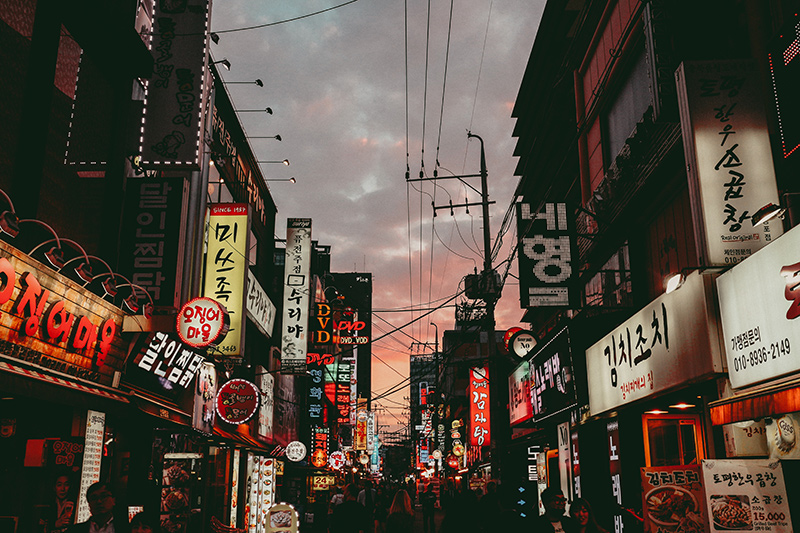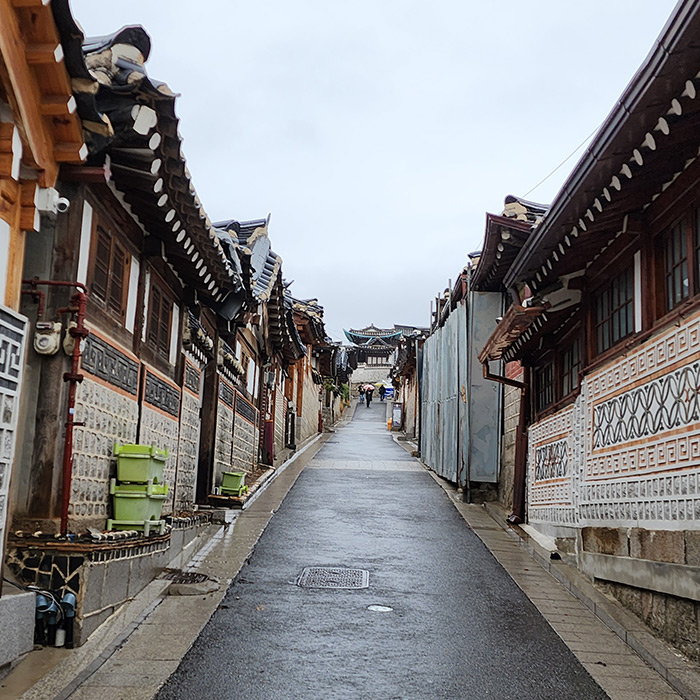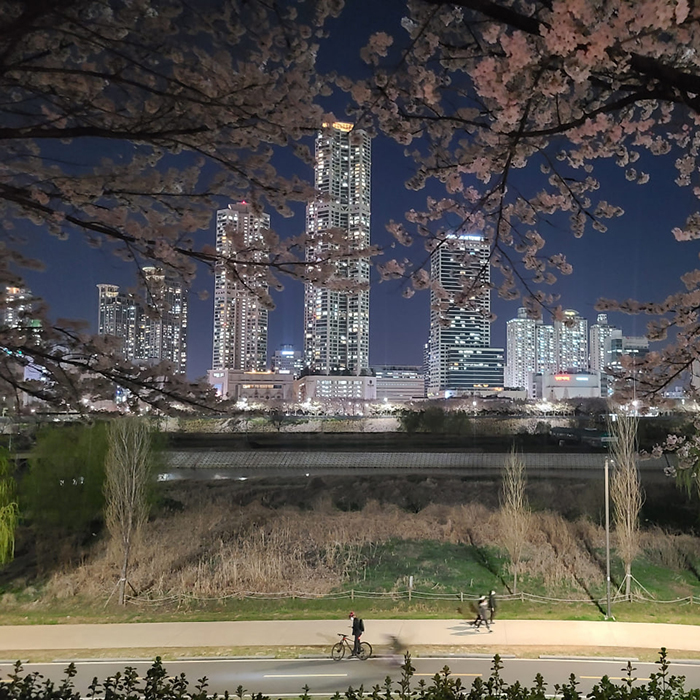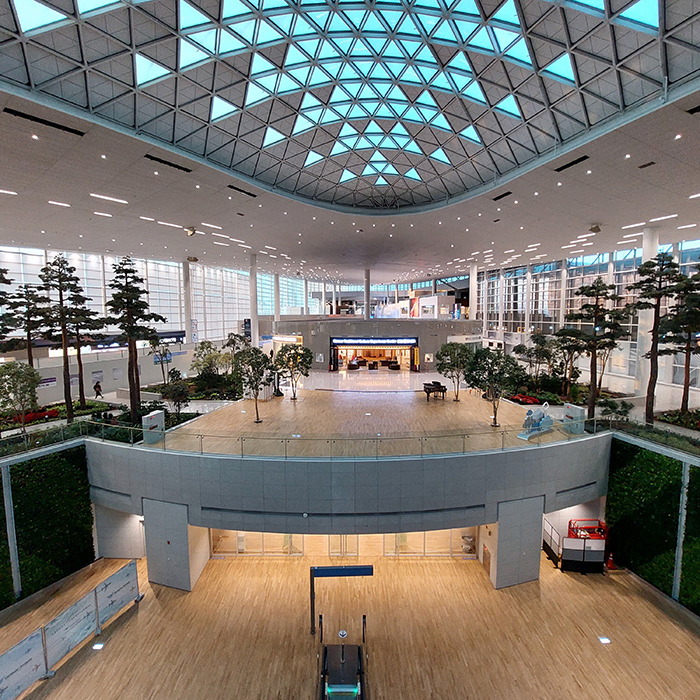Amidst the bustling high-tech cityscape of Seoul lies a world frozen in time, where the architectural marvels of traditional Korean homes, called Hanok, offer a serene escape. These elegant structures are emblematic of Korea’s rich past, inviting visitors from around the globe to experience a piece of living history.
Creativity and beauty in Hanok seoul architecture

Hanoks are not mere houses; they are treasures of Korean culture. With gracefully curved roofs, wooden beams, and tiled pathways, each Hanok is a work of art. Beyond their beauty, Hanok structures are also a testament to traditional Korean wisdom, built to coexist harmoniously with the natural environment.
Bukchon Hanok Village: Indescribable beauty of ancient traditions.
Nestled between Gyeongbokgung Palace and Changdeokgung Palace is the Bukchon Hanok Village, an area with the largest concentration of preserved Hanoks. Walking through its alleyways, visitors witness history come alive, with some homes opening their doors to reveal museums, tea houses, and cultural centers.
Staying in Hanok: Traveling back in time to the history of Seoul!
For an immersive cultural experience, several Hanoks in Seoul operate as guesthouses. These stays offer a unique opportunity to live as the locals did centuries ago, with the modern comforts carefully woven into the experience. It’s more than just accommodation; it’s a way to connect with the Korean way of life.
Jeongdong Observatory:Gazing in awe at the splendor of Seoul’s Hanok architecture.
At the Jeongdong Observatory, visitors can view a seamless blend of traditional Hanok rooftops against Seoul’s modern skyline. It’s a perfect spot for photographers and romantics alike, illustrating the harmony of Seoul’s duality.
Cultural Activities in Hanok Settings:Savor the most delicious tea!
Many Hanoks host interactive experiences, from traditional tea ceremonies to Hanji (traditional Korean paper) crafting workshops. Such activities provide hands-on learning about Korean traditions and arts.
Exploring Seoul’s Hanok Heritage: More Than Just Architecture

The Hanok homes are not just architectural wonders but also a gateway to understanding Korea’s societal values and historical norms. Guided tours through neighborhoods like Ikseon-dong narrate stories of Seoul’s past, giving deeper insights into the country’s customs and family life through the lens of Hanok architecture.
The Art of Hanok Construction: Creator of Artistic Masterpieces.
The ingenuity of Hanok design lies in its use of natural materials such as wood, soil, rock, and paper, as well as its distinctive heating system known as ‘ondol’. This ancient method of home heating has been utilized in Korea for centuries and is a fine example of sustainability in traditional living.
Hanok Renovation and Preservation Efforts
Several Hanoks in Seoul have been skillfully restored and adapted for modern use, proving that historic preservation and contemporary life can coexist. By understanding these preservation efforts, visitors gain appreciation for the meticulous care that goes into maintaining the integrity and authenticity of these cultural landmarks.
Seasons in the Hanok Village
Every season paints the Hanok villages in a new light. From the gentle blush of spring blossoms to the fiery leaves of autumn, each period lends a unique charm to the Hanok experience. Seasonal festivals and events often take place in these historical settings, offering a perfect blend of nature and culture.
Local cuisine in historical settings with unforgettable flavors
Food is an integral part of any cultural outing, and many Hanoks have been converted into restaurants serving traditional Korean cuisine. Dining in these historical homes allows visitors to savor authentic flavors while surrounded by centuries-old architecture.
Supporting the Local Hanok Community

Visitors have the opportunity to support the local community by purchasing handicrafts or participating in workshops led by local artisans. This not only contributes to the preservation of traditional crafts but also directly benefits the residents who maintain the Hanok legacy.
Conclusion:
In a city that’s continuously racing towards the future, Hanoks in Seoul are cherished sanctuaries of tranquility. These structures are not just remnants of the past but are active centers of Korean culture today. Whether it’s through a simple visit or an overnight stay, the memories from a Hanok will linger long after one returns to the present-day rush.
Seoul’s Hanok homes epitomize the graceful coexistence of past and present. They allow visitors to step into a bygone era and experience the warm essence of Korean hospitality. As custodians of history, Hanoks are not just architecturally significant; they are vibrant communities where the legacy of Korea’s culture and tradition continues to thrive.



